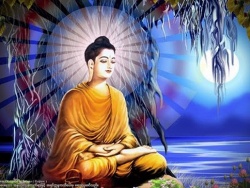The Connection between Astronomy and Astrology in Tibetan Culture
Astronomy, astrology, and traditional medicine are intertwined in Tibetan culture. Tibetans often consult with a traditional "astro practitioner" when faced with important events or decisions, such as the birth of a child. As in many other cultures, a horoscope chart is often drawn up. Aspicious and inauspicious dates are calculated, usually in relation to the phase of the moon and the lunar calendar. Uranus, Neptune, and Pluto are not considered in the Tibetan system because they do not appear in the Kalachakra tantra and are considered too distant to be of any influence.
An important fundamental difference between Western and Tibetan astrological predictions is that in Tibet horoscopes are considered to only be predictions of potential obstacles based on a person's accumulated karma. Otherwise, as the 15th century sage Kaydrubjey noted, a dog and a person born at the same time in the same place would share the same exact fate. One can avert potential harm through the proper actions. For example, if a child's birth horoscope predicts difficulties for the child, his or her parents might practice purification rituals to prevent these karmic seeds from ripening, such as sparing the life of an animal destined for slaughter, donating money to the poor, or reciting particular prayers. Nothing is written in stone, and all potential events can be averted, otherwise enlightenment would be impossible.
One of the predictions made by natal horoscopes is a person's potential lifespan. In order to attain one's potential lifespan, one must engage in ethical practices and accumulate positive karma. Otherwise, one will never attain this potential age. In the original Kalachakra system, the maximum lifespan is 108 years, but when these teachings migrated from India to Tibet the number was reduced to 80, because we are currently in a degenerate age when the average lifespan is decreasing.
Since the human body is composed of the same elements as the food it consumes, and disease is commonly thought in Tibetan culture to be caused by an imbalance between these elements, medicines can be created out of these same elements to restore the balance and hence cure the disease. Traditional Tibetan medicine also takes into consideration past accumulations of bad karma by the ill person, and therefore spiritual and astrological knowledge are combined with medical knowledge when prescribing an antidote for a particular ailment.
For more information, consult the following websites:
http://www.tibet.com/Med_Astro/index.html
http://www.tibetanmedicine-edu.org/en/tttibetanastrology.html
